Alleviation: An International Journal of Nutrition, Gender & Social Development, ISSN 2348-9340
Volume 7, Number 7 (2020): 1-11
© Arya PG College (College with Potential for Excellence Status by UGC) & Business Press India Publication, Delhi
http://apcjournals.com, www.aryapgcollege.com
Opinions of College Students Regarding Selfies
Anuradha Mathu1* and Himani Jatav2
1Assistant Professor and 2Research Scholar
Department of Extension and Communication
Faculty of Family and Community Sciences
The Maharaja Sayajirao University of Baroda , Vadodara
(Gujarat), India
*Email: anuradhamathu@yahoo.co.in
Abstract
Information and communication technology is an added advantage in the hands of the youth today and the evolution of internet and World Wide Web have transformed the whole globe, presenting a new way of communication. Now, internet is more about online communication - Blogs, Podcasts, Facebook, Myspace, Twitter, LinkedIn, WhatsApp, Wechat and so on. A selfie is an informal term used to describe a self-portrait photo that is uploaded and posted on social networking sites. The present study was undertaken to study the opinions of the first year students of The Faculty of Family and Community Sciences, The Maharaja Sayajirao University of Baroda, Vadodara, regarding Selfies. The sample of the study consisted of 102 students of first year of Family and Community Sciences, The Maharaja Sayajirao University of Baroda, Vadodara. A structured questionnaire was developed. It was found that student’s reason for taking selfie was not to reduce stress, students felt confident by taking selfies, almost half of the students felt more positive about their self, high majority of the students said that taking selfies provided better memories about the occasion and the experience, 74.50 per cent of the students did not share their selfies for gaining attention on social media and half of the students were addicted to sharing their selfies.
Keywords: Opinions of College Students, Selfies, Smart Phone, Emotional Pleasure.
Introduction
Information and communication technology is an added advantage in the hands of the youth today and, the evolution of internet and World Wide Web have transformed the whole globe, presenting a new way of communication. With the rapid development of information and communication technologies, individual's social communication and interaction patterns have been changed a lot. Widespread use of technologies such as internet and mobile phones have made life easier. It serves several purposes such as social networking and communication, education, research and obtaining new information from various search engines. Social networking phenomenon has emerged over the past ten to fifteen years. Now, internet is more about online communication - Blogs, Podcasts, Facebook, Myspace, Twitter, LinkedIn, WhatsApp, Wechat and so on. These are some of the tools associated with a recent phenomenon called “social networking”, which gives one access anytime, anywhere. In short, the youth today feel incomplete if they are not able to access internet in college or homes or at any other place. Social networking is becoming a very important part in the life of youth and students.
The youth of today wants to go out and express to the whole world what he or she feels, or does in his/her very mundane and sundry jobs which might be eating out in restaurants or trying the latest flavour of Ice-cream, or some new blend of tea, coffee and so on and so forth. The platform for such activities is provided by the mobile technology. Today's youth wants to express and that may ever be by taking their own pictures or ‘selfies’ and uploading or sharing or posting ‘selfies’ on various social networking platforms may be even as profile pictures for Facebook, WhatsApp or even sharing their stories through messenger Snap Chats and so on. The reason may also be that many celebrities, actors, actresses, politicians, T.V. show anchors, news and radio, TV, cinema and print media journalists, radio jockey, news anchors and even many social activists use Facebook, Instagram, Blogs, Twitter not only to express their opinions, distaste, or also for campaigning for a cause like Shree Narendra Modi - The Prime Minister of India uses websites and micro blogging sites for campaigning for many Developmental Issues in India like 1) "Beti Bachao- Beti Padhao" Save the Girl Child and Educate the Girl Child. 2) "Swacch Bharat Abhiyaan" - Clean India Green India campaigns.
Selfie – A Model Form of Digital Photos
A selfie is a self-portrait photograph, typically taken with a smart phone which may be held in the hand or supported by a ‘Selfie Stick’. Selfies are often shared on social networking services such as Facebook, Snapchat and Instagram. A Selfie is an informal term used to describe a self-portrait photo that is uploaded and posted on social networking sites. The subject usually takes the picture at arm's length. Another method used to take a Selfie is to take a picture of one's reflection in a mirror.
Named ‘word of the year’ in 2013 by the Oxford English Dictionary, the term ‘selfie’ has become ubiquitous in the vocabulary of nearly every teen and young adult in the technological world. A selfie is defined as “a photograph that one has taken of oneself, typically thus, photo that you take of yourself, usually for use in social media. Selfie refers to a version of self-portraiture which predominantly takes the form of a photograph taken by oneself on a smart phone or webcam. The image is then often uploaded to a social media channel. ‘Selfie’ culture is associated with social networking services such as Facebook, Instagram and Snapchat. ‘Selfies’ show the subject in a flattering light and some psychological studies of selfie-posting on Social Media have revealed an extreme behaviour of narcissism.
Making a selfie is an expression of a desire to save the moment. It can also reveal much about the personality of the person who has taken the picture. Most people record selfies to post and share on Social Media, it is a popular new lifestyle of the twenty-first century. There is a general difference in the selfies taken by the genders, women are more expressive at and post their selfies more frequently, as compared to men. In the past, when people did not have access to computers, getting a self-portrait was fashionable, thus, selfies replaced that previously more difficult mode of photography. They are especially valued among the young generation. Approximately 93 billion selfies are imaged by Android cameras each day. Among 18-24 years olds, reportedly every third photograph taken by them is a Selfie. It is important to know about the psychology of selfies and their consequences for the individual and the community. Posting a selfie on the internet is common these days. People taking more selfies may tend to be extroverts. Selfies can have a favourable aspect, but also might introduce a critical new concern. Selfies are imaginative and do increase the chances of expressing oneself, they also might make people more independent and help to combat boredom. However, taking selfies can also sometimes be inconsiderate of other people, especially when “getting the perfect shot” becomes an obsession. An additional very worrisome issue emerges especially when young girls post their pictures and use them to judge their own bodies or when inappropriate photos are disseminated digitally. When such or any other sensitive, personal images are posted, their dissemination is no longer restricted, sometimes with ill effects. It can result in dangerous consequences. Once something is posted, the sender loses control over it and the outcome may be something undesirable or negative. It is here that the most negative or worst outcome from taking and posting selfies in social media may be seen or witnessed.
Despite selfies being normal, selfies also might become harmful. It is here that one needs to understand what the limit is and what is normal behaviour and abnormal behaviour. That can be associated with taking selfies and sharing them much too often which may further become an addiction or behavioural problems leading to psychological condition. Excessive selfie clicking can become a troublesome obsession and may be related to different personality traits. These three of these personalities are Narcissism, Psychopathy, and Machiavellianism. Narcissistic people exhibit feelings of superiority and perfection, but also often harbor self-doubt. Those with psychopathy have little compassion about harming others. Persons with Machiavellian traits fulfil their wishes with diminished ethics. All three utilize social websites that allow posting and amending pictures. Individuals with low self-esteem, obsession, and/or hyperactivity also sometimes exhibit high rates of “snapping” selfies. The youth or college students in particular may also display their ‘selfies’ with the cakes, pastries, ice-cream, latest dress to wear, accessories and you name it.
Another negative side of taking and sharing selfies is that there is a news every other day about an accident related to death due to taking a selfie. In the excitement to click the best shot, reportedly, some teenagers have lost their lives, for one example, by being hit by a train in trying to achieve a most exotic selfie. People with light sensitive epilepsy might induce a seizure by exposure to phone camera lighting. Obsessive traits also can emerge in a way similar to gambling or excessive computerized gaming etc., that can become a major social problem. This may be more so with youth or college students.
Taking a self-picture is normal, until it vastly exceeds the usual frequency, when it starts providing emotional pleasure, or interferes with a normal life-style. These would be some signs of concern. As with much other behaviour, moderation is encouraged. Physicians might occasionally need to provide guidance at self-photography frequency and limits. We may also need to counsel parents when selfies becomes an issue for the family.
Reasons for Taking Selfies by Youth and Particularly College Students
There are different kinds of psychological factors which drive any specific person to take a selfie and upload it to various social media. It could be anything. Everyone’s own situation is different, but here are some of the most common reasons:
• To genuinely express themselves - not all selfies are driven by narcissism. Lots of people take selfies and post them on various media just to authentically express what they are doing or thinking.
• To build their own self-image - many people take selfies entirely for themselves, even though they may post them on various media for everyone else to see. For these people, taking selfies allows them to become more confident with their appearances.
• To get attention from as many people as possible - people like to get noticed on social media, and all of those likes and comments from friends are a quick and easy way to fish for compliments and boost one’s own ego. This may be due to narcissism.
• To get a specific person’s attention – youth or college students who are connected on a social media to someone they admire may be more driven to upload attractive or alluring selfies as a way to seek attention, especially if they are too shy to do it in person. It is a strange new flirting method that is used since the rise and use of mobiles.
• There are people who are bored at work, bored at school, bored at home and bored in the toilet. Some people will take selfies because they have nothing else better to do.
Because social media is fun. Last but not least, social media is about being social. Thus may upload as many selfies as possible. Some people do not need a real reason to do it. They just do it because they like to do it, it is fun and it is a cool way to sort of document your own life.
It is now hard to imagine a life without selfies. This is because of front-facing cameras and the rise of social media. Selfies populate our camera rolls, instagram feeds, dating profiles and vocabularies.
Selfitis
‘Selfitis’ is a genuine mental condition and people who feel compelled to continually post pictures of themselves on social media who may need help, psychologists.
The term was first coined in 2014 to describe obsessive Selfie-taking in a spoof news story which suggested the American Psychiatric Association considered classifying it as a disorder.
Selfitis which is a psychological disorder of excessive selfie taking and sharing. Selfitis with respect to the three alleged levels:
• Borderline: Taking photos of one’s self at least three times a day but not posting them on social media.
• Acute: Taking photos one’s self at least three times a day and posting them on social media
• Chronic: Uncontrollable urge to take photos of one’s self round the clock and posting the photos on social media more than six times a day (Knapton 2017).
Deaths in India due to Selfie Taking
India takes the lead when it comes to deaths due to taking selfies. Selfie is the latest fad among people, especially the younger generation. Whether you are at the railway station, restaurant, in the park or any other scenic or not so scenic place, you would come across youngsters clicking pictures of themselves, which are more commonly known as selfies. Though, these selfies are good for a person’s Facebook post, but there have been several instances where selfie-obsessed youngsters have severely injured themselves or even met their death while trying to take a selfie. Oblivious of the surroundings, people have fallen to their death or have been run over by vehicles while in the process of taking a selfie. Some individuals have even gone a step ahead and attempted to take selfie at dangerous places or in difficult positions, thereby meeting a gory end. A 17-year-old teenage, trying to take a selfie on the tetrapods at Marine Drive Mumbai, India met with accidental death. The tide was high and it hit the girl pulling her into water. This is not an isolated case but many incidents have taken place in which precious lives have been lost, because the youth were trying to take ‘selfies’ in dangerous situations or places.
Selfie craze in India and the accident rate is so high that a research had stated that India had the highest number of selfie related deaths in the world. The study maintained that from March 2014 to September 2016, a whopping 60 per cent of the selfie deaths took place in India. The study, was titled “Me, Myself and My Killfie: Characterizing and Preventing Selfie Deaths” It was estimated that of the 127 selfie deaths that took place across the globe, 76 occurred in India. In contrast Pakistan reported just nine deaths while both the US and Russia witnessed eight and six deaths, respectively. The researcher of the study hoped that their study would serve as a warning for the people on one hand and would inspire new technology that could warn selfie-takers when they are in risky zones, or areas and trying to take selfies in dangerous situations.
It is observed that young men who are more prone to undertake dangerous selfies. The team analysed a large number of selfies posted on twitter and came to the conclusion that 13 per cent of these were taken in dangerous situations. Alarmingly, a majority of these were young people falling under the age of 24 years. While in the world, most people have died by falling of high buildings and mountain cliffs, in India most deaths have been water-related or near railway tracks. In the world of virtual reality, human bonds are weakening and the generation is becoming more prone to selfies.
‘No Selfie Zones’ at dangerous places: The increasing number of selfie deaths in India has made the government to take notice of these dangerous places. In 2015, Kumbh Mela had set up ‘No Selfie zones’. Now, more areas are being added to the list. The state governments have been notified by the Tourism Ministry to mark ‘No-Selfie Zones’ at certain popular tourist attractions. As most deaths take place near water fronts and these are in abundance in Mumbai, the government has listed 16 sites as selfie-free zones with a number of them around waterfronts such as Juhu and Dadar beach fronts, Chow-patty, Marine Drive Mumbai, India and so on. To combat selfie deaths, Mumbai police has placed warning sites at these areas. More officers have also been deployed to watch over the people and keep vigilance. Taking selfies is not wrong but it is imperative to be aware of the surroundings. Selfies should be avoided in dangerous places, for it is always better to be safe than sorry.
The advantages of taking and sharing selfies could be that they may boost the confidence of the youth. They may capture memorable moments which can further become good memories to look back upon.
The major disadvantages can be that selfies can become obsessive and lead to narcissism- a psychological disorder and they also may sometimes be revealing, which can further lead to embarrassment.
Justification of the Study
We live in the age of communication. A world of media tends to fulfil our dreams and aspirations of information, surveillance and socialization. When we hear about selfies, our mind would automatically fill with joy and cheer. Now-a-days, selfies play important role in our lives. We love to have all our moments caught in our camera. However, choosing the places taking selfies will be more important than your expression. Now, people go on dangerous places to take best selfies and in addition, sharing the best selfies to and get more and more likes and comments. In India, there are many death cases due to taking selfies on dangerous places. Now selfie has become a new addiction for young generation.
Over a period of time, technological advancement has given us new addiction disorders. Last two decades were known for computer addiction disorder and internet addiction disorders. Smartphone has intruded in our daily life so much that without which we cannot survive. Many of today’s generation smart phones are equipped with high resolution cameras, it is called selfie camera. Though, people were fond of taking photographs of their own and others since many decades, with selfie camera, it has led to an extreme effect. It is coupled with posting the selfie photographs (selfie) on social networking sites and media. Further, the youth wait for the comments of friends and others. This has lead to chain of reactions leading to a complex addiction disorders which we may easily call as Selfie Addiction Disorder, or Selfitis.
Selfies are exploding up everywhere all over the world of social media and most recently even a number of the world’s most famous personalities of society including actresses, actors, sportsmen, politicians and the majority of youth and college students are taking the selfies and posting and sharing them on social media. Most of the people love to take selfie and the selfie are still very popular. Taking selfies and sharing them through social media websites has developed into one of the trendy enjoyable activity and cannot be denied. But especially few of us, do identify the hidden facts after this addiction of selfies is also foundation of numerous psychological mental illness and disorders and selfies can turn dangerous when youth take them at dangerous locations. There are always two sides of every story, here the positive side is that they may increase self-confidence; love for oneself, improved social life and capturing memories has become so easy. But, at the same time, they can turn into a menace and spoil the entire, event, programme, picnic, joy and fun by becoming a ghastly event or situation when the end is death due to selfie capturing at dangerous spots or places with wild animals, running trains, waterfalls mountain cliffs and so on.
Justification of the Sample
Smart phones have become a necessary evil in our lives. ‘Selfies’ have become the newest technological trend to take over the youth due to the easy availability of mobile phones. The college students in particular are no exception to the necessary evil. There are scientific data on selfies in general and from our country in particular. But there are no studies to reveal the opinions of college students on Selfies in particular and the reasons for which they take and share selfies on various social networking sites.
Indian studies reveal that the students can also be associated because India has the targets of highest number of Facebook users by country. Those deaths take place usually when people attempt to take selfies in dangerous contexts, such as in water, from heights, in the proximity of moving vehicles like trains, or even wild animals like tigers and so on.
Objectives of the Study
Broad Objective
To Study the opinions of the first year students of The Faculty of Family and Community Sciences, The Maharaja Sayajirao University of Baroda, Vadodara, regarding Selfies.
Specific Objectives
• To study the profile of the first year students of The Faculty of Family and Community Sciences, The Maharaja Sayajirao University of Baroda, Vadodara.
• To study the frequency of capturing selfies among the first year students of Faculty of The Family and Community Sciences, The Maharaja Sayajirao University of Baroda, Vadodara.
• To study the reasons of taking and posting selfies’ on social media by the first year students of The Faculty of Family and Community Sciences, The Maharaja Sayajirao University of Baroda, Vadodara.
• To study the problems faced while taking and sharing selfies by the first year students of The Faculty of Family and Community Sciences, The Maharaja Sayajirao University of Baroda, Vadodara.
Delimitations of the Study
• The study will be delimited to the first year students of The Faculty of Family and Community Sciences of The Maharaja Sayajirao University of Baroda, Vadodara of Academic Year 2018-19.
• The study will be delimited to the first year students of The Faculty of Family and Community Sciences of The Maharaja Sayajirao University of Baroda, Vadodara, regarding taking and sharing selfies on social media only.
Assumptions of the Study
• The first year students of The Faculty of Family and Community Sciences of The Maharaja Sayajirao University of Baroda, Vadodara may be taking and sharing selfies on different social media and would be available to provide the information related to selfies during their practical classes.
Methodology
Population of the Study
The population of the study was the first year students of Faculty of Family and Community Sciences, The Maharaja Sayajirao University of Baroda, Vadodara, of the academic year 2018-19.
Sample of the Study
The sample of the study consisted total one hundred two students, of first year students of Family and Community Sciences, The Maharaja Sayajirao University of Baroda, Vadodara.
First step – First year students were selected purposively as the researcher wanted to study their opinions regarding selfies with regards to the frequency of capturing selfies, reasons and problems they face in taking and sharing selfies.
Second step- First years students could be selected purposively with convenience from all four groups during their practical classes.
So, the researcher approached the practical teacher for purposively selecting students from all the groups.
Tool for Data Collection
A structured questionnaire was developed. Questionnaire was prepared after reviewing related materials from journals, dissertations. Investigator visited the Research and Documentation Centre of Department of Extension and Communication, Faculty of Family and Community Sciences, The Maharaja Sayariao University of Baroda, Vadodara. E-resources were also referred for related articles, dissertation, and other literature.
Validation of the Research Tool
The questionnaire was given to nine experts for the purpose of validation. The experts were professors and assistant professors from Department of Extension and Communication to check the validity of the tool. The experts were given questionnaires for checking the appropriateness of the tool for its content, response system and language used in questionnaire. The experts were also requested to see whether the questionnaire was complying with the objectives of the study; its clarity, ambiguity and format. The experts suggested certain changes in the questionnaire.
The final questionnaire was made after incorporating all the changes that were suggested by all the experts.

Results and Discussion
 Table 2 reveals that majority of the student’s reason for taking selfie was not to reduce stress which was 76.48 per cent. However, 23.52 per cent reported that their reason for taking selfies was to reduce stress. This meant that not majority of students would take to selfies for reduction of stress but still a large number did take selfies for doing so.
Table 2 reveals that majority of the student’s reason for taking selfie was not to reduce stress which was 76.48 per cent. However, 23.52 per cent reported that their reason for taking selfies was to reduce stress. This meant that not majority of students would take to selfies for reduction of stress but still a large number did take selfies for doing so.
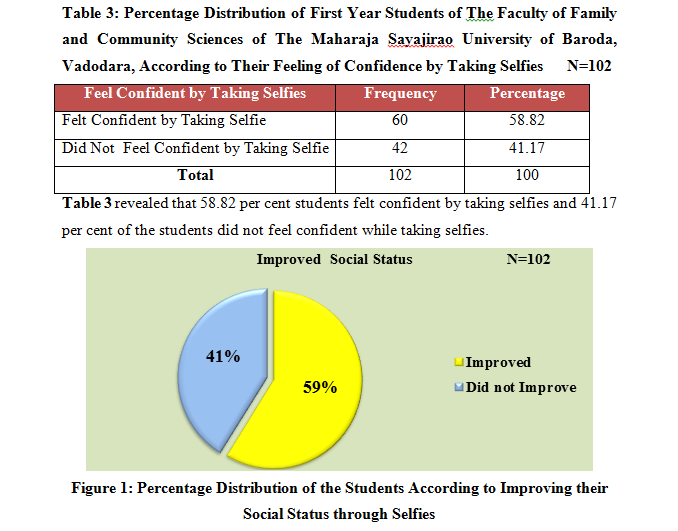
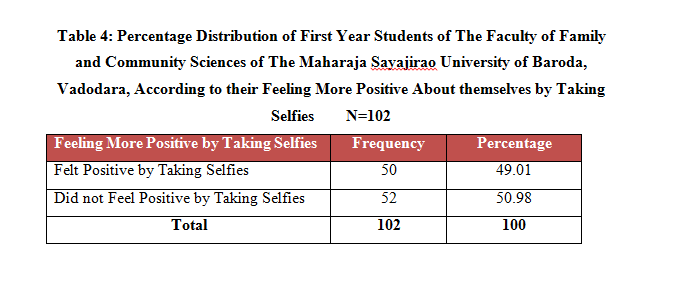 Table 4 revealed that almost half of the students 49.01 per cent felt more positive about their self when they took selfies, whereas, about 50.98 per cent did not feel more positive about themselves after taking selfies. This meant that almost half of the students were feeling positive by taking selfies
Table 4 revealed that almost half of the students 49.01 per cent felt more positive about their self when they took selfies, whereas, about 50.98 per cent did not feel more positive about themselves after taking selfies. This meant that almost half of the students were feeling positive by taking selfies
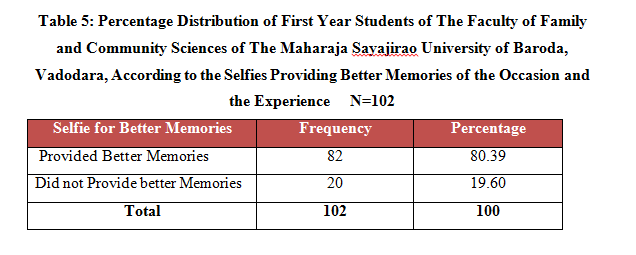 Table 5 reveals that high majority of the students said that taking selfies provided better memories about the occasion and the experience, whereas, about 19.60 per cent students did not feel that selfie provided better memories about the occasion and the experience. These days we see youth especially college students taking selfies at all places like restaurants, malls, cinema halls, waterfalls and so on. This goes to prove that those students want to save their memories through selfies.
Table 5 reveals that high majority of the students said that taking selfies provided better memories about the occasion and the experience, whereas, about 19.60 per cent students did not feel that selfie provided better memories about the occasion and the experience. These days we see youth especially college students taking selfies at all places like restaurants, malls, cinema halls, waterfalls and so on. This goes to prove that those students want to save their memories through selfies.
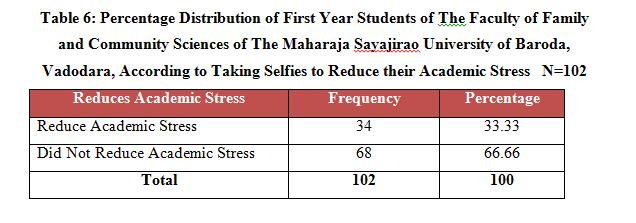 Table 6 reveals that majority of the students i.e. 66.66 per cent did not take selfies to reduce their academic stress and it did not give them a different mood of relaxation, whereas 33.33 per cent students thought it reduced their academic stress and gave them a different mood of relaxation through taking selfies. This could be because the students were not very much addicted to taking selfies and sharing selfies.
Table 6 reveals that majority of the students i.e. 66.66 per cent did not take selfies to reduce their academic stress and it did not give them a different mood of relaxation, whereas 33.33 per cent students thought it reduced their academic stress and gave them a different mood of relaxation through taking selfies. This could be because the students were not very much addicted to taking selfies and sharing selfies.
Table 7 shows that 74.50 per cent of the students did not share their selfies for gaining attention on social media whereas, 25.49 per cent of the students shared their selfies for gaining attention on social media. This may be due to the selected students personality of not being attention seeking.
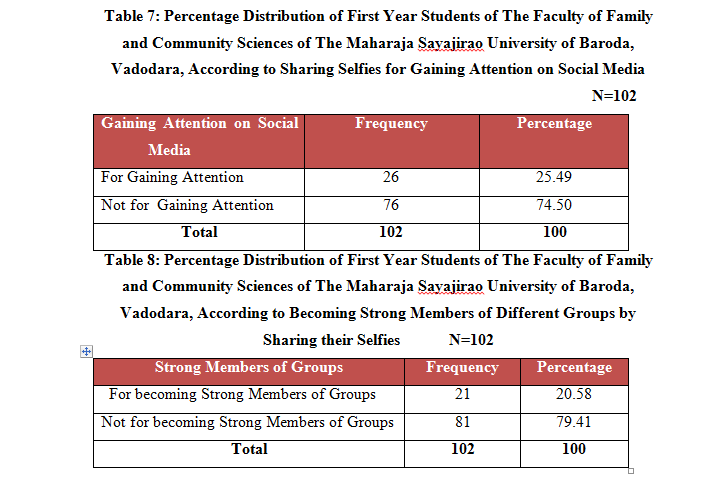 Table 8 reveals that majority of the students 79.41 per cent did not share their selfies for becoming strong members of different groups whereas, 20.58 per cent students shared their selfies for becoming strong members of different groups. Even becoming a strong member of group may be a strong reason for sharing selfies. This trend is also catching up in different social networking sites.
Table 8 reveals that majority of the students 79.41 per cent did not share their selfies for becoming strong members of different groups whereas, 20.58 per cent students shared their selfies for becoming strong members of different groups. Even becoming a strong member of group may be a strong reason for sharing selfies. This trend is also catching up in different social networking sites.
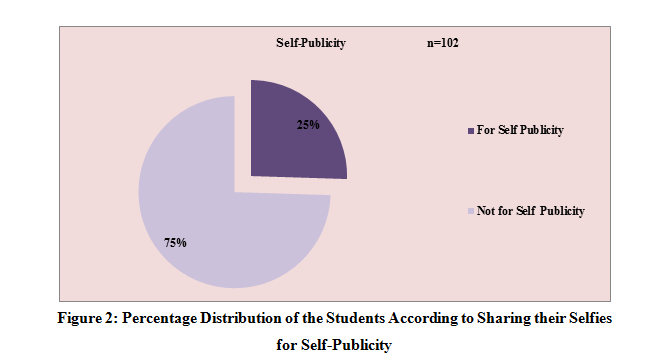 Table 9 revealed that 66.66 per cent of the students did not share their selfies for showing-off their good looks, whereas 33.33 per cent of the students shared their selfies for showing-off their good looks. This reflects that the personality type of the students may not be to show-off their good looks.
Table 9 revealed that 66.66 per cent of the students did not share their selfies for showing-off their good looks, whereas 33.33 per cent of the students shared their selfies for showing-off their good looks. This reflects that the personality type of the students may not be to show-off their good looks.
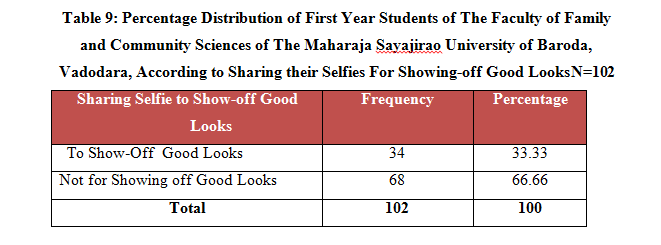
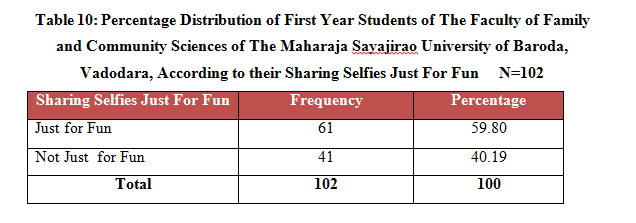 Table 10 reveals that 59.80 per cent of the students shared their selfies just for fun, whereas, 40.19 per cent of the students did not share their selfies just for fun. This means that majority of students were doing it for fun and may be those students who did not share did not get any fun from doing so.
Table 10 reveals that 59.80 per cent of the students shared their selfies just for fun, whereas, 40.19 per cent of the students did not share their selfies just for fun. This means that majority of students were doing it for fun and may be those students who did not share did not get any fun from doing so.
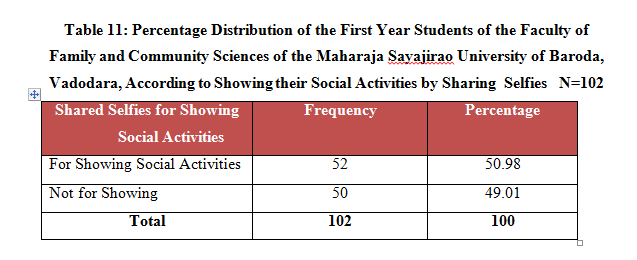 Table 11 reveals that half 50.98 per cent of the students shared their selfies to show their social activities whereas, half of the students i.e. 49.01 per cent did not share selfies to show their social activities. This could be because half of the students are still private about their social activities.
Table 11 reveals that half 50.98 per cent of the students shared their selfies to show their social activities whereas, half of the students i.e. 49.01 per cent did not share selfies to show their social activities. This could be because half of the students are still private about their social activities.
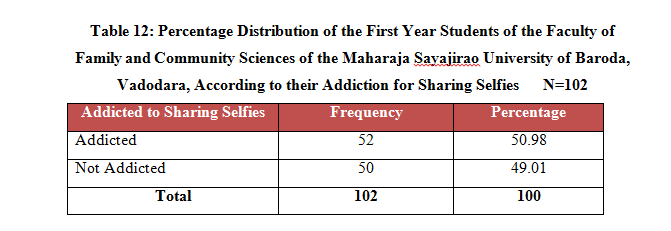 Table 12 reveals that half of the students were addicted to sharing their selfies and half were not addicted for sharing their selfies. This could be because there is addition to selfies as reported by many researches. However, in the present study only fifty percent were getting addicted to this craze.
Table 12 reveals that half of the students were addicted to sharing their selfies and half were not addicted for sharing their selfies. This could be because there is addition to selfies as reported by many researches. However, in the present study only fifty percent were getting addicted to this craze.
Problems Related to Selfies of the Selected First Year Students of the Faculty of Family and Community Sciences of the Maharaja Sayajirao University of Baroda, Vadodara
This sections deals with the problems related to selfies by the first year students of the Faculty of Family and Community Sciences of the Maharaja Sayajirao University of Baroda, Vadodara, according to taking and sharing selfies on various Social Media
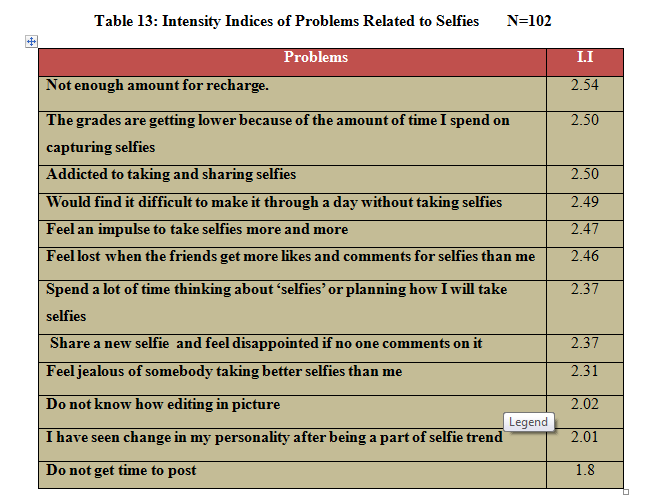 Table 13 reveals that the Intensity Indices for the statements/ items range from 2.54 to 1.82. In the particular study however the statements got 2.54 to 1.82 range Intensity Indices which means all the problems were faced to the great extent.
Table 13 reveals that the Intensity Indices for the statements/ items range from 2.54 to 1.82. In the particular study however the statements got 2.54 to 1.82 range Intensity Indices which means all the problems were faced to the great extent.
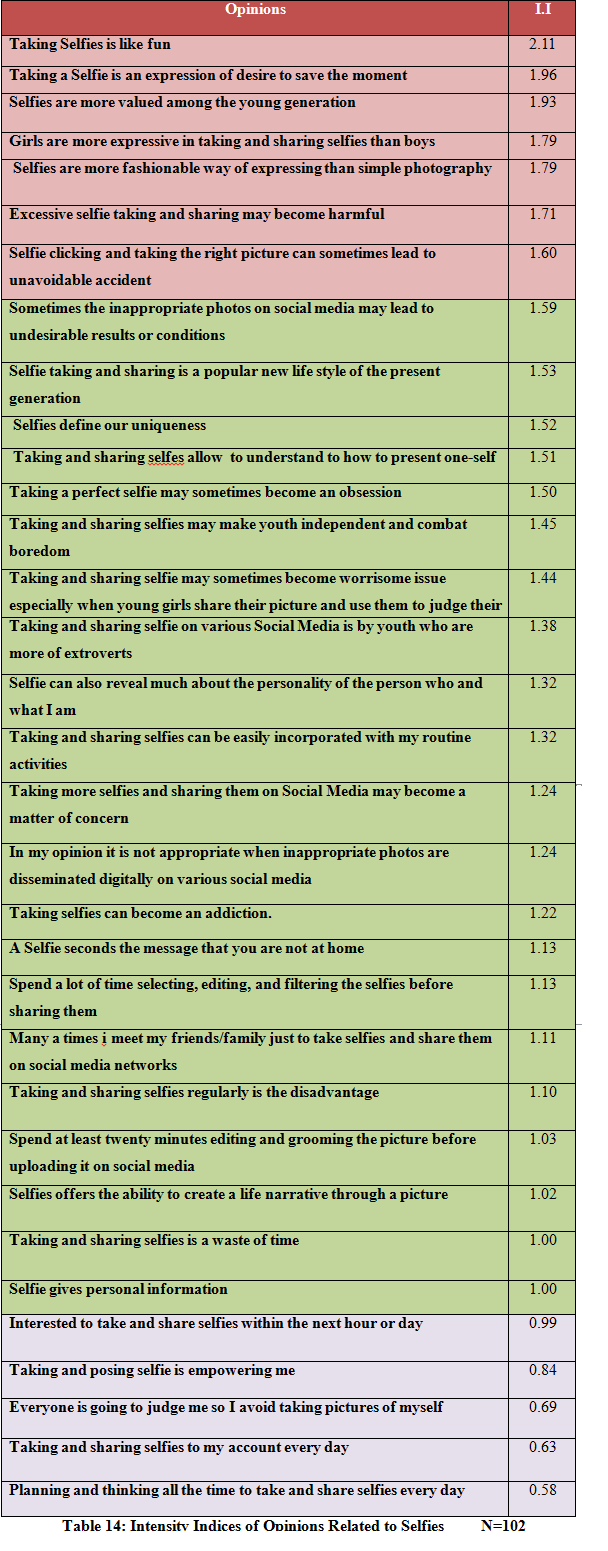 Table 14 reveals that the Intensity Indices for the statements/ items ranged from 2.11 to 160.
Table 14 reveals that the Intensity Indices for the statements/ items ranged from 2.11 to 160.
Conclusion
So, it can be concluded that selfie taking and sharing has the two sides to it like a coin. The positive side is to express creativity and save the moment or memory for a long time but the negative side is that it can become on addiction and spoil the moment when it leads to accidents or can become fatal in dangerous situations.
Recommendations for Future Researches
The following studies are suggested for future,
• The same study can be conducted in different Faculties of The Maharaja Sayajirao University of Baroda, Vadodara, regarding Selfies
• The study can also be conducted for finding outs the Attitude and behaviour of the Youth towards Selfies taking and sharing.
The implications form the present Study
References
Knapton S (2017) Selfitis-The Obsessive Need to Post Selfies is a Genuine Mental Disorder. Available at : www.telegraph.co.uk › News › Science.
https://en.m.wikipedia.org/wiki/Digital_photography.
https://www.huffpost.com/entry/word-of-the-year-2013_n_4296009.
(https://www.google.com/amp/s/www.mapsofindia.com/my-india/society/selfie-deaths-india-takes-the-lead/amp).
https://www.google.com/amp/s/www.mapsofindia.com/myindia/society/selfie-deaths-india-takes-the-lead/amp.
https://www.google.com/amp/s/www.mapsofindia.com/my-india/society/selfie-deaths-india-takes-the-lead/amp.
(https://www.hercampus.com/school/sacred-heart/pros-and-cons-selfies).

